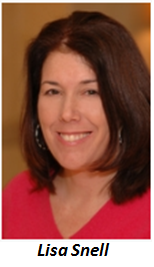LOS ANGELES – The long-standing rap against charter schools is that they cherry-pick only the best and brightest students, and leave the “hard cases” for the underfunded traditional public schools. Critics say this is why charters typically have higher student test scores than traditional schools.
A new government report appears to confirm those suspicions.
A study conducted by the Government Accountability Office (the investigative arm of the U.S. Congress) finds that “disabled students represented 8.2 percent of all students enrolled during the 2009-10 year in charter schools, compared with 11.2 percent of students attending traditional public schools …,” reports the New York Times.
This government study proves once-and-for-all that traditional public schools are “saddled” with 3 percent more hard-to-educate students than charter schools. Now we can say with certainty that the playing field is uneven, the game is rigged, right?
Not so fast, says Lisa Snell, director of education for the Reason Foundation.
In her most recent blog, Snell points out that the GAO gives the impression that traditional public schools do a better job of serving special needs children, just because they seem to have more of them.
“In fact, an alternative explanation might be that public schools are better at gaming the funding system by labeling a larger number of children as special education,” Snell writes.
She identifies research that finds a large percentage of special needs students are so labeled “simply because they haven’t learned how to read.”
“ … (A) 2001 report published by the Fordham Foundation and the Progressive Policy Institute estimates that nearly 2 million children would not have been classified as learning disabled if the public schools they attended had provided proper, rigorous, and early reading instruction,” Snell writes.
In other words, the higher number of “special needs” students might indicate that traditional public schools really have a shortage of effective teachers.
“A plausible explanation for the 3 percent differential between charter schools and traditional schools is that many charters do a better job of teaching students to read, have aggressive early-intervention programs, and simply do not label as many children as special education in the first place.”
Snell says this is a common charter school strategy, known as “neverstreaming.”
EAGnews has the full article










